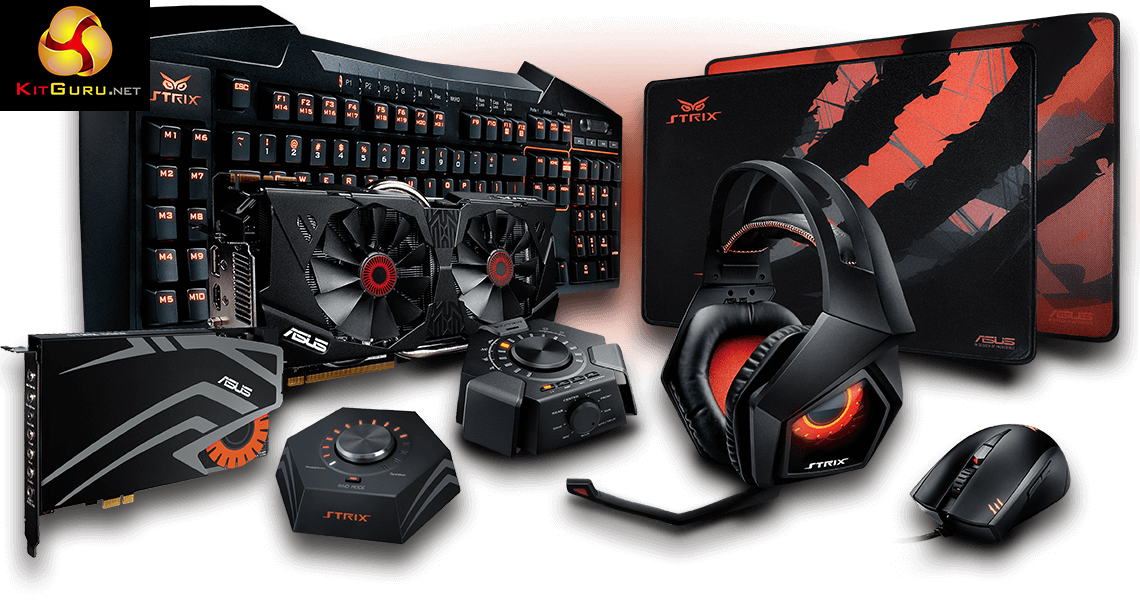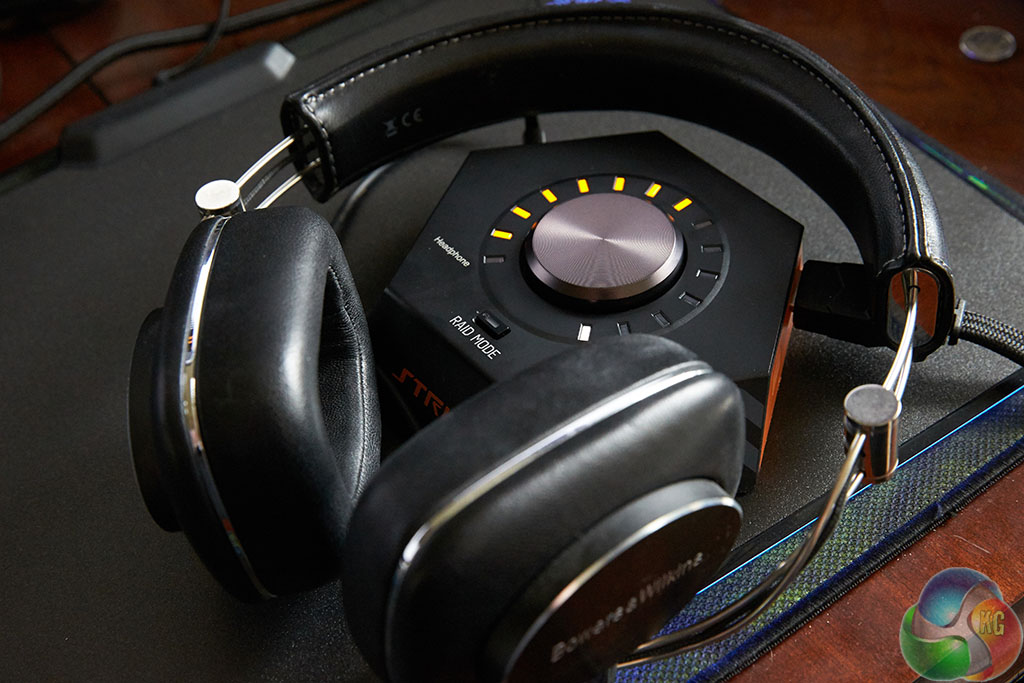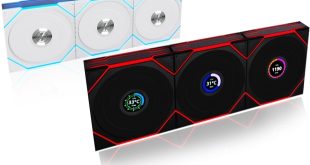If you are reading this review it is almost certain you are interested in audio reproduction and may even be dissatisfied with the current audio chip built into your motherboard. My thorough testing over the last couple of weeks has highlighted that the ASUS Strix RAID Pro 7.1 PCI-E is a remarkably capable product backed up by expansive, stable, intuitive software.

The headphone amplifier aspect of the ASUS Strix RAID Pro 7.1 PCI-E deserves special mention. We analysed audio quality and impedance drive capabilities with a variety of headphones from companies such as Grado, Beyerdynamic, Sennheiser, AKG and Bowers and Wilkins.
The amplifier section is capable of powering all, but it will struggle with the most demanding headphones such as the HiFi Man HE600 or Abyss 1266. These are known as particularly difficult headphones to drive properly however and it seems a rather unlikely situation to be pairing up a £100 sound card with a £4,000 headphone.
While I am not the kind of person to extoll the virtues of a surround sound configuration there is no doubt that when partnered up with a quality pair of Razer 7.1 gaming headphones, the overall experience was highly entertaining.

For me, the ASUS Strix RAID Pro 7.1 really truly shines when paired up with a higher grade headphone around the £250-£300 price point. The Bowers and Wilkins P7 was a match made in heaven, and I spent many hours listening to my 24 bit collection of The Doors albums.
These headphones do tend to stray into the bass heavy category at times, but with proper amplification they are also extremely punchy and focused. The headphones did not spring to life in quite the same way when powered by the onboard audio chip on the motherboards we sampled from our labs.
If the ASUS Strix RAID Pro 7.1 PCI-E cost £250 then I would look at the investment factor a little more closely. When you find out that it is for sale at £99.95 from Overclockers UK then it seems like a complete no brainer to me. If you already listen to well recorded music or want to watch a movie collection and play games then you simply do need to consider one of these as your next hardware treat.

Buy from Overclockers UK for £99.95 inc vat HERE.
Discuss on our Facebook page, over HERE.
Pros:
- Volume control box is handy.
- high grade components on PCB including Nichicon capacitors.
- strong software suite.
- 24 bit, 192kHz support.
- 7.1 surround works well.
Cons:
- None.
Kitguru says: The ASUS Strix RAID Pro 7.1 PCI-E is really a must have product if you value audio reproduction at all. The headphone amplifier deserves special mention – it is a huge upgrade from the onboard amplification of a motherboard.

 KitGuru KitGuru.net – Tech News | Hardware News | Hardware Reviews | IOS | Mobile | Gaming | Graphics Cards
KitGuru KitGuru.net – Tech News | Hardware News | Hardware Reviews | IOS | Mobile | Gaming | Graphics Cards



I received this card yesterday and installed all the necessary components. This review did not cover speaker performance one bit which is a major failure in this card as it sounds terrible with my analog 5.1 setup!
Probably the biggest let downs for analog speaker use is: 1 – there is no LFE subwoofer control, therefore my klipsch R110SW is being forced to output bass incorrectly leaving a huge frequency gap in the 120-200hz range.
2 – no dolby upmix packages are included for analog speaker outputs, the inbuily upmix sounds narrow and terrible.
Even the best onboard audio solution have no subwoofer control , your expectation well exceed reality.
Beside that this card is focusing on gamer market , over 90% of their analog speaker setup is a pair of front speakers.
Yeah but that’s onboard audio, for something that you’re paying extra for then I’d expect to have control over these features.
True but again I’d still expect to see it at this price point.
Quick question, is the virtual surround a “real” surround trick? And by that i mean, does it fool windows into thinking that there’s actually a 7.1 system plugged in or is it a simple stereo expand?
What I fiend weird is that Asus uses a USB2.0 audio chip together with a PCIe to USB converter. So essentially this is an internal USB Audio card. Because there are enough PCIe audio chips available, the only reason I can think of is that Asus wanted to cut down driver development and with this solution they can use the same driver for internal and external cards. I agree with Bulletlol that not having a LFE subwoofer frequency control is a let down for a product at this price.
Com on man, my ancient Asus P6T motherboard has a 10 band equalizer! What is with this limiting 8 band equalizer on this soundcard!?
lol, if the 8 band isnt able to correct for room/speakers/setup, the 10 wont either.
I don’t use the EQ to correct the audio for the room, I use the EQ to correct the audio to suit my taste, this is especially true since I wear headphones more than I use desktop speakers.
No difference.
Good cans will only need improvement on low or high frequency, if they need more than that, not really good headphones.
Unless we are talking about cans in the +800$ range where sometimes you have to compromise a little to get the better overall experience.
Then again, i don’t know anyone that spend more than 500 on cans/speakers, and doesnt use a +200$ card, which allow for swapping components to adjust the sound, hence limiting the need for additional equalization…